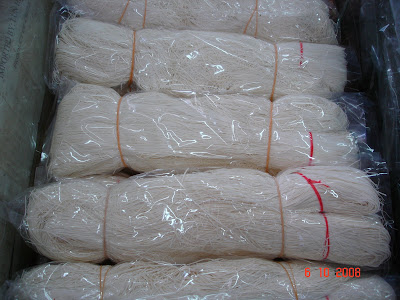The Foochows started having motor launches from the time Rev James Hoover introduced the first motor engine to the Foochow pioneers of Sibu, sometime in the early 1900's.
My grandfather by 1910's owned three of them: But I can only remember the name of one of them, Hook Ann. The three motor launches were used to carry passengers, and goods. However he sold all three by the 1950's, perhaps it was because he had some other businesses to do, which fitted his age. He moved to Sg. Merah and most probably acquired land in the quiet, and started his brickyard, Kiong Ang, in Sg. Aup.
 |
| Modern version of motor launches of yesteryears |
The motor launches of the Rajang captivated my imagination. They brought me to my maternal grandmother's village, Ah Nang Chong, where I could enjoy holidays with my cousins in the big house. Occasionally I went to Ensuari and Sarikei , accompanying my grandmother. There were certain memories deeply embedded in my mind.
Motor launches were the life line of the Foochows who settled all along the middle Rajang River. They planted rubber, padi and fruits. Each homestead also had ducks, chickens and vegetables. Methodist churches and schools sprang up wherever there were Foochows. By 1935, there were 41 churches and 39 schools. My own maternal grandfather donated some land to the Church to build a primary school, Tiing Nang and a church, Hook Ming Tong.
These motor launches brought the Foochows and their products to Sibu which was truly a bustling town by the 1950's. The Sibu wharf was a busy place and boat honking was loud and clear, giving people a lot of hope and inspiration for the future. Even though I was not even a teenager by then, I could feel the excitement and the quickening pulse of the thriving economy.
As a young girl I had already started to observe the behaviour of the frugal Foochow men and women. Firstly they would not spend their cash unnecessarily by going straight to the shops to buy stuff. They would bring their products to the market first and then put the cash into their hidden pockets in their trousers or blouses. A treat for themselves would be a bowl of kampua mee at Moi Soung if they thought they could use some money and wait for their last motor launch. Many would buy food and return as soon as possible to their villages before noon, if their transactions could be completed. Secondly, most of them would stand outside some of the popular shops along the Five Foot way to meet up with relatives. Thirdly, they would collect their mail, either from Nang Kwong or Hock Chiong, the rubber middleman business. Fourthly, they would do things very quickly, like buying supplies and fresh meat as soon as they could and fill their rattan baskets methodically.
I also remember my aunts loved to buy kompia and mah ngii, after they had some tofu or soy milk at the corner of Yu Chiong Company. My Foochow relatives eating and standing there was a happy scene in my mind all these years.
One very memorable scene was an aunt who kept her shoes in her hands from the boat, until she was near the Chinese temple. She had a hard time wearing her rubber shoes because her feet had been swollen by the fact that she had been stepping on the rubber sheets solidified by formic acid.She had to be treated in the Lau King Howe hospital for bad skin problems.In those days most Foochows' feet were "eaten" by ern moh choo, or formic acid. Many in fact suffered the worst of skin ailments and lesions. It was almost impossible to describe some of the lesions I saw. When private doctors started opening their clinics in Sibu, the rubber industry had already declined and women who had grown older had to live with white patches in their feet, the scars of formic acid.
There was another time when a young woman who was jilted by her lover was frothing in the mouth and vomiting because she took some formic acid to end her life. Many of the Foochow fellow passengers were sympathetic and tried to help the family to bring her to the hospital. Unfortunately the motor launch could not stop at the hospital jetty and she had to be taken by trishaw to the hospital, still writhing in pain. That was one ending to one of my childhood holidays down river. I was numb with fear after that and hated even the term Ern Moh Chu. We were told later that she died a slow death
It was good to see the smiles and joy on the faces of the Foochows as they alighted from the motor launches.



















